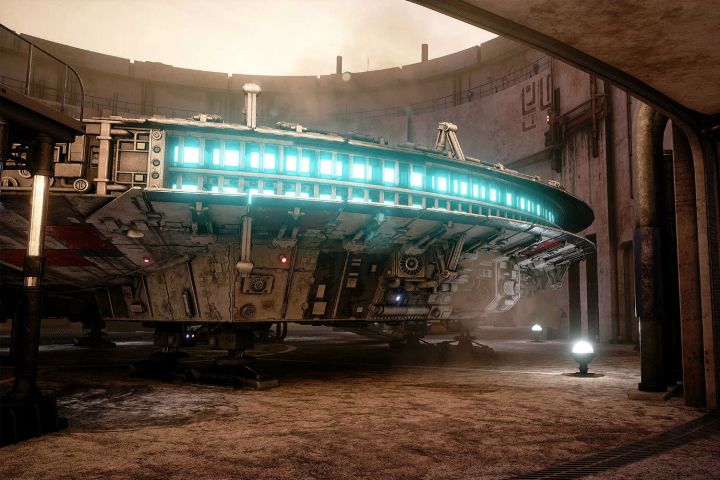
It all started with the Millennium Falcon. Or at least, a 3DS Max model of it. Senior environment artist Jason Lewis had put it together as personal project, but thought it might be nice to see it run in real-time.
So, he did what anyone would do. He started putting together an immense and detailed model of Tatooine’s infamous spaceport, Mos Eisley, as a setting for his model of the Falcon.
At the time, Lewis says, he was pretty unfamiliar with Unreal Engine 4, so using it to build Mos Eisley was an excuse to learn the ins and outs of the platform. Hours turned into days, days turned into months, and the project grew from a small personal exercise into a big “interactive fan art piece” with contributions from around 17 other artists at Obsidian.
Lewis announced plans to port the “fan art piece” into a VR compatible format eventually, following on the heels of Industrial Light and Magic’s official VR recreation of the Millennium Falcon.
In an interview with 80 Level, Lewis goes into the nuts and bolts of putting together such a faithful recreation of an iconic environment. He describes how the project eventually became a company-wide experiment to see how much detail he and other environment artists could pour into a single environment and still maintain an acceptable frame rate on current PC gaming systems.
The lovingly detailed recreation of Mos Eisley is available for download but proceed with caution, the system requirements are not for the faint of heart. You’re going to need around 16GB of RAM, and an Nvidia GTX Geforce 760 or AMD equivalent, if you want to walk the weathered halls of Mos Eisley with anything approaching an acceptable frame rate.
Unfortunately, the Mos Eisley replica is still just an unofficial piece of fan art, it’s not an indication of any forthcoming Star Wars games from the game studio behind Knights of the Old Republic 2.


